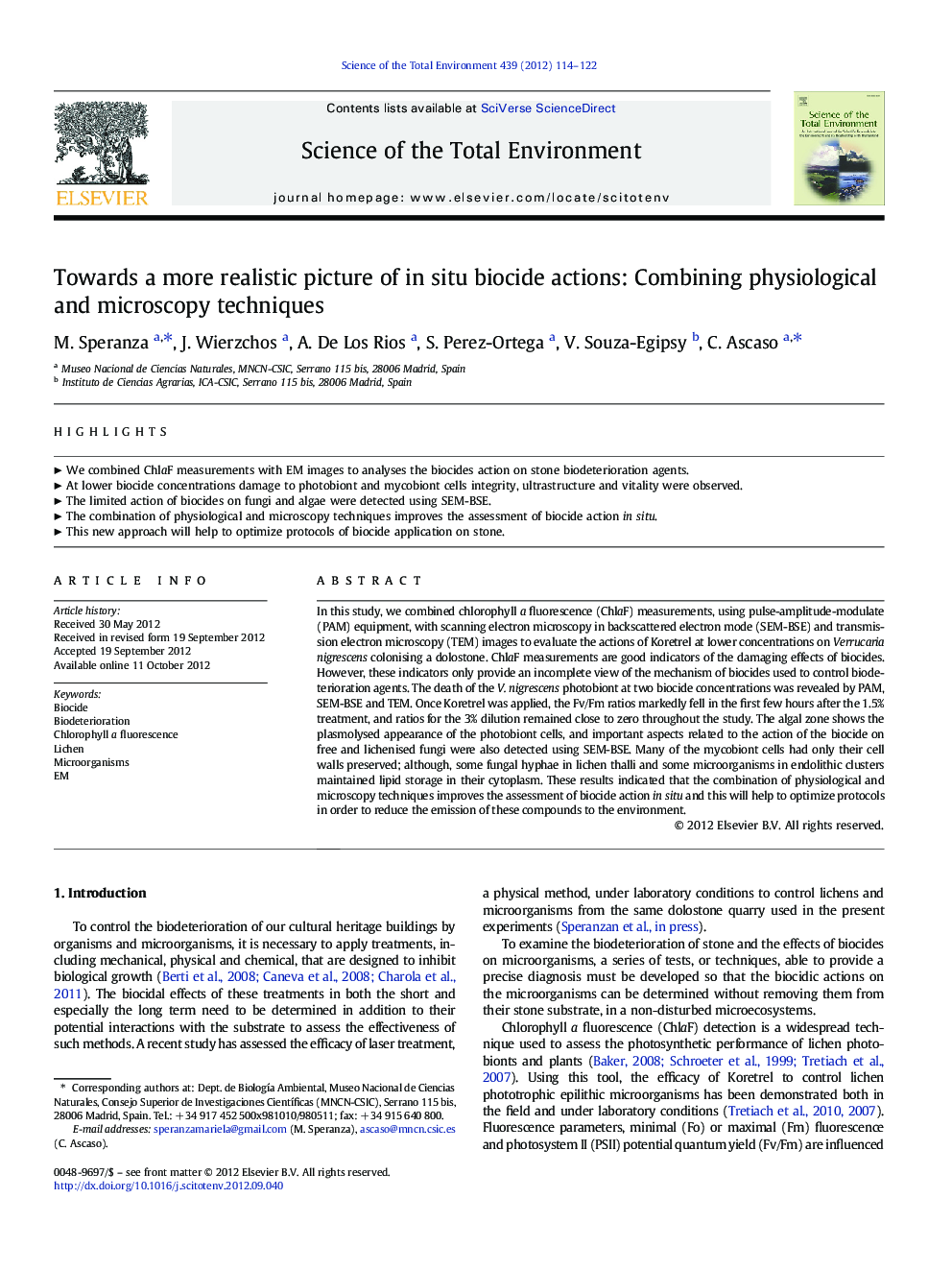| Article ID | Journal | Published Year | Pages | File Type |
|---|---|---|---|---|
| 4429192 | Science of The Total Environment | 2012 | 9 Pages |
In this study, we combined chlorophyll a fluorescence (ChlaF) measurements, using pulse-amplitude-modulate (PAM) equipment, with scanning electron microscopy in backscattered electron mode (SEM-BSE) and transmission electron microscopy (TEM) images to evaluate the actions of Koretrel at lower concentrations on Verrucaria nigrescens colonising a dolostone. ChlaF measurements are good indicators of the damaging effects of biocides. However, these indicators only provide an incomplete view of the mechanism of biocides used to control biodeterioration agents. The death of the V. nigrescens photobiont at two biocide concentrations was revealed by PAM, SEM-BSE and TEM. Once Koretrel was applied, the Fv/Fm ratios markedly fell in the first few hours after the 1.5% treatment, and ratios for the 3% dilution remained close to zero throughout the study. The algal zone shows the plasmolysed appearance of the photobiont cells, and important aspects related to the action of the biocide on free and lichenised fungi were also detected using SEM-BSE. Many of the mycobiont cells had only their cell walls preserved; although, some fungal hyphae in lichen thalli and some microorganisms in endolithic clusters maintained lipid storage in their cytoplasm. These results indicated that the combination of physiological and microscopy techniques improves the assessment of biocide action in situ and this will help to optimize protocols in order to reduce the emission of these compounds to the environment.
► We combined ChlaF measurements with EM images to analyses the biocides action on stone biodeterioration agents. ► At lower biocide concentrations damage to photobiont and mycobiont cells integrity, ultrastructure and vitality were observed. ► The limited action of biocides on fungi and algae were detected using SEM-BSE. ► The combination of physiological and microscopy techniques improves the assessment of biocide action in situ. ► This new approach will help to optimize protocols of biocide application on stone.
